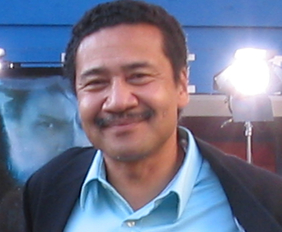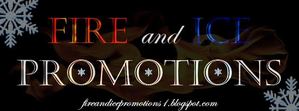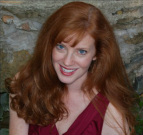While William's journey has just begun, Kalapati, a bow woman for hire, has begun her own quest. But she is charged with delivering a child to a sinister cult leader, bent on taking charge and controlling the lives of all those in the state.
As William and Kalapati fight to complete their missions, they soon come to wonder how their efforts will change their futures. Will they join forces for the greater good or will the past experiences of each limit the choices available to them? The battle for libraries to control the future of California begins.
Welcome S.A. Gibson!
I have enjoyed reading science fiction and speculative fiction since I was a young teen. After writing my first fiction book last year, I discovered writing is more challenging than I imagined. I'm enjoying learning from others the craft of writing that immerses the readers in the story.
2. What inspired you to write Feeling a Way?
My first fiction novel, A Dangerous Way, related a story of the library swordsman in mid-career after many adventures across two continents. I now have to reveal a little of his origin story. So, Feeling a Way is set in California, where William Way first arrives in the future United States.
3. Reading sequence for the series?
The in-world chronology is different from the publication order of the series. So far there are two series: “After the Collapse” and “The Protected Books.” Pratima's Forbidden Book, book 1 of “The Protected Books,” published earlier this year, has a young William Way, as a major character. As a teenager in Rajasthan, India, he's an apprentice for libraries and has not become an expert with swords, yet. Feeling a Way, book 1 of “After the Collapse,” takes up the story of William after he arrives in California after years of sword training. A Dangerous Way, book 2 of “After the Collapse,” follows William years later in New Mexico as he wields his sword for the libraries.
4. Tell us a little bit about your characters William and Kalapati.
William is a scout, library investigator, and swordsman. He has traveled from India to help the local California librarians solve a mystery involving stolen Hindu religious books and kidnapped children. Kalapati is an archer from a Native-American community who makes her living contracting out her abilities for pay. Her assignment to escort a young boy across Southern California will bring her into conflict with the libraries and their scout, William.
5. Why woodpunk dystopia? Describe your research process for creating a post-apocalyptic world with limited or no modern technology.
Creating future California without technology is a fun history learning endeavor. People, in this future without modern technology, need to accomplish the same things we do in our modern world. They need to produce food. They need clothing and houses. They need to travel and communicate over distances. Finally, they need to have the means to live peacefully together, or defend themselves from violent people. The historical truth is that people in the past did all those things. I researched slide rules, messenger pigeons, donkey transportation, bows, arrows, swords, and atlatls.
6. Did you have a message in mind for your readers when creating this series?
I am perplexed by our obsession with violence. I've edited an academic book about ethnic conflict, which will be published this year. In my fiction, I want to address, in entertaining ways, the mistaken belief that we must fight with one another to resolve our conflicts. In small ways, I want to make people think about how violence can be avoided.
7. Your intended age range/target audience? Do you feel a sense of responsibility when writing for a younger audience/how does this impact your storytelling?
My stories would be suitable for middle-school on up. They have no sex and no cursing. They contain some violence, but only to serve the needs of the plot and story. As I write, I consider the target audience, but my main goal is to recreate my own sense of excitement when I read science fiction as a teen. Young people will confront difficult subjects, in their lives, and I think about how to write about such issues.
8. Describe your approach to conflict resolution for your characters and how has your life shaped your fiction or your fiction shaped your life (political activism).
Weapons are too often the chosen solution to conflict. I've always been interested
in how our society chooses to respond to conflict. I've been involved in social justice
and been arrested for committing civil disobedience. In my stories, I want to make
people feel, think, and empathize with the other. My dream is that writing can help
us grow as a society.
9. Your key ingredients for creating a believable dystopia?
The seeds of dystopia are around us in our daily lives. Sometimes, we are just inches away. If fate followed a different path, we could all find ourselves in a dystopia. And, some people in the world today are living in a dystopia. So, I look at elements in the world around me and think about possible futures.
10. Your writing process (plotter or pantster)?
I mix a touch of plotting with heavy doses of pantsing. I start with a general idea and outline of where the story starts and ends. Next, I start writing. As the scenes come to life, the story deepens and expands.
11. You’ve created many characters in your different stories, who’s your favorite and why?
I am most interested in strong female characters. I want to portray young females as capable and able to tackle new unforeseen challenges. This does not mean they have to use weapons and fighting. Pratima, in her first book, is a heroine who doesn't fight in traditional ways. She wins by influencing others to cooperate with her plans.
12. Who has been the most influential writer in your life? Most influential book/series for the kind of books you create?
I was impressed by the books of Lois McMaster Bujold. It was a surprise, to me, how deep and textured characterization and conflict could be in science fiction stories. While many of her stories are considered space opera, I hope I can model the depth of my stories after her complex stories.
13. Future projects—what can we look forward to next from S.A. Gibson?
I have ideas for a third story in the series with William Way and Kalapati Blackhand. That third book in the series will ask what if Native-Americans regain control of the future United States and have to face a violent invasion from Asia?
Red's Randomness—Just for Fun Questions

My chiweenie, Cantinflas, acts like a cat. He sits in my lap, rubs against my leg, and taps me on the face when he thinks it is breakfast time.
2. You’re stranded on an island—author or book character you’d choose as a fellow castaway?
Stephanie Meyer wrote a book called Host. I would like to spend time with the main character, Melanie. An added benefit is that Melanie shares her body with the parasitic alien named Wanderer. So, I could have the company of two for the price of one!
3. Fill in the blank. Before I die I want to _______.
Pay my student loans!
4. Favorite Hobby?
Computer programming. Nothing more relaxing and challenging than laying down thousands of lines of code, and scratching my head asking myself why?
Bio:

Buy Links
iTunes: https://itunes.apple.com/us/book/feeling-a-way/id1020472127
Kobo: https://store.kobobooks.com/en-US/ebook/feeling-a-way
B&N: http://www.barnesandnoble.com/w/feeling-a-way-s-a-gibson/1122339895?ean=2940152040241
Smashwords: https://www.smashwords.com/books/view/560807
Book landing page: http://bookae.org/
Social Media Links
https://gibsonauthor.wordpress.com/
https://twitter.com/smalllinux
https://www.goodreads.com/book/show/25926842-feeling-a-way?ac=1




 RSS Feed
RSS Feed